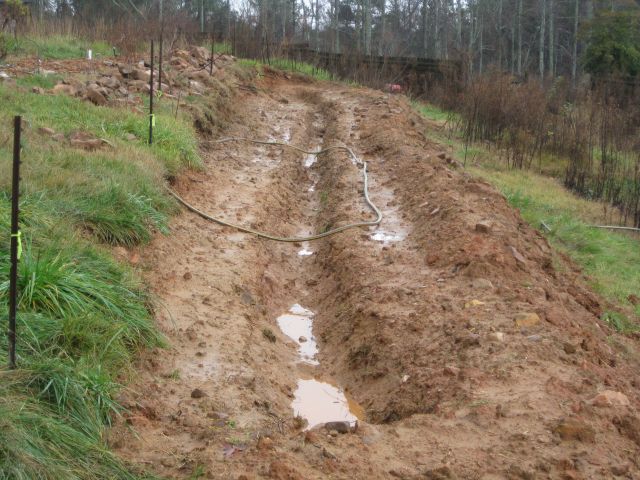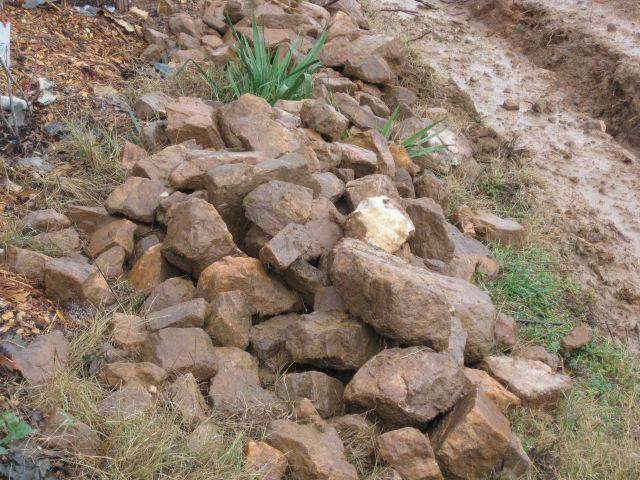In a previous post I mentioned the repercussions experienced from locating my muscadine grape plantings too close to my vegetable beds. Just as the vines of the muscadine grow interminably so do their roots and the raised beds, tomato planting sites and other vegetable sites were mined by muscadine roots. I relocated half (6) of the muscadines earlier in November and have now prepared a site for relocating the remainder.

The site is on the slope of a small hill which has blueberries at the top and a fruit tree orchard lower down. I decided to carve out a terrace between the two, approximately 8 ft wide and 100 ft long, with my bobcat. Terracing the first 50 ft was uneventful and then I hit the rocks. It seemed the slope was made from rocks. With the teeth of the loader I jiggled the rocks loose and then manually lifted the rocks and stacked them above the terrace. Seemed interminable. Eventually a terrace appeared. But it sloped from the north end to the south end, which meant the intended contour ditch would be more drain than a container of rainwater.
I hammered in 6 – 4ft metal rods equidistant along the terrace and then with my transit level and surveyors tape tied to the rods, I identified the grade (you can see some of them in the above ‘photo). With my bobcat I then pretty much leveled the terrace, though there is still some dip from the north end to the south end.
Next step was to dig a trench/ditch down the middle. I replaced the loader on the bobcat with a trencher/stump remover attachment and after pulling out more rocks had a rough ditch. A lot more work with a shovel was required to make it presentable.

Now I had bare clay earth and the prospect of oncoming wintry rains and erosion. I discussed with the owner of the local farm supply store whether I could still seed with clover. He suggested winter rye grain was a better bet for a cover crop. So I sowed the rye and hope it will germinate.
With the terrace now done, next tasks will be chain sawing some anchor posts for the cables for the muscadine grapes. There is a toppled maple tree which I may use – though toppled, it is off the ground and its wood hasn’t rotted. Also a poplar which needs to come out since it blocks my tractor when I go chipping in the woods. Oak would be a better bet for longevity but I cannot justify (yet) cutting down a good oak for fence posts.
